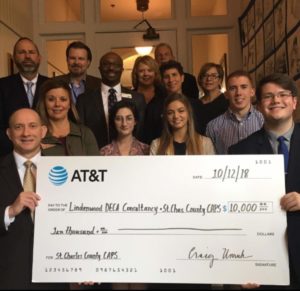One Step At A Time
Applying to college can be overwhelming for many
January 4, 2019
Applying to colleges can be a really stressful time for many students. Some get overwhelmed with the application process, and some don’t even know where to begin looking. However, if you take it step by step the process can be a lot less stressful than most people make it out to be.
“There are a lot of things to consider when applying to colleges and it can be really overwhelming. My best advice for students would be to take it one step at a time,” said the college career counselor Ms. Gerringer.
For starters, the best thing you can do your freshman and sophomore year to get ready for college is to make sure to get involved and stay focused. The first two years do matter, and when you get to your junior/senior years take a few AP classes just to see what it’s like.
The first step would be to figure out what exactly you want in a college. Your freshman/sophomore year you can begin to brainstorm ideas. For example, do you prefer something small or something big? What major are you interested in and what colleges have good programs with that particular major?
Junior year is a great time to start college visits. You can go onto the college’s website and there is usually times where you can go and get a tour of the college to see if its right for you.
Junior Ashlyn Green started looking for colleges her freshman year, and then began going on college visits jus this past year (her junior year). Specifically, she looked for colleges that had good track programs and Christian influences.
“My dream school is Liberty University , and most people haven’t heard of it because it’s really small, but it has everything I’m looking for. I plan on applying either at the end of my junior year or beginning of my senior year,” Green said.
The summer before senior year is a great time to start working on applications. The common app allows you to create an application, and this application is then universal for most colleges, so you don’t have to spend time filling out multiple ones.
When it comes time to actually apply, make sure to pay attention to deadlines. There are many different deadlines, depending on a variety of factors.
First, there are early decision deadlines, usually in November. Students who apply early decision, will hear back from a college sooner than others who turn in applications later. These admissions decisions often come out in December.
However, early decision acceptances are binding, which means that an accepted student must enroll at the college.
Early action is another type of application deadline that tends to be in November or December. Similar to early decision, students who apply early action will hear back from schools sooner, but these aren’t binding.
Students can also choose to apply by a school’s regular decision deadline, which can be as early as Jan. 1. Students who apply regular decision generally hear back from schools in mid-to-late March or early April.
There is also something called rolling admissions, and at these colleges they evaluate applications as they receive them and release admissions decisions on a regular basis.
Senior Emily McPherron started looking her sophomore year. For her, she looked for colleges in the city, and colleges that were smaller. McPherron waited until Nov. 1 to apply, but she met the deadline for early decision, so she will hear back sooner than others that wait until after January to apply.
“I’m still waiting to hear back but my first choice would definitely be Loyola Chicago. I also applied to schools in Colorado too,” she said.
Another thing to keep in mind when applying for colleges is that some applications (although not all) do have an application fee, so make sure to pay attention to that.
Additionally, another thing to keep in mind is some colleges offer fee waivers.
College application fees can really add up, but every income-eligible student who takes the ACT with a fee waiver, can choose from over 2,000 participating colleges and apply for free. These waivers will be delivered online to eligible students.
Another thing to pay attention to is, in October you can file your FAFSA report, which they will then make a report for you based on a variety of different things, such as parents income, and they will offer grants to help you pay for college.
There is a lot of things that go into applying for colleges and it can be overwhelming, but college is also a very exciting time and if you take a deep breath and keep yourself on track…everything will work out the way it’s supposed to.












